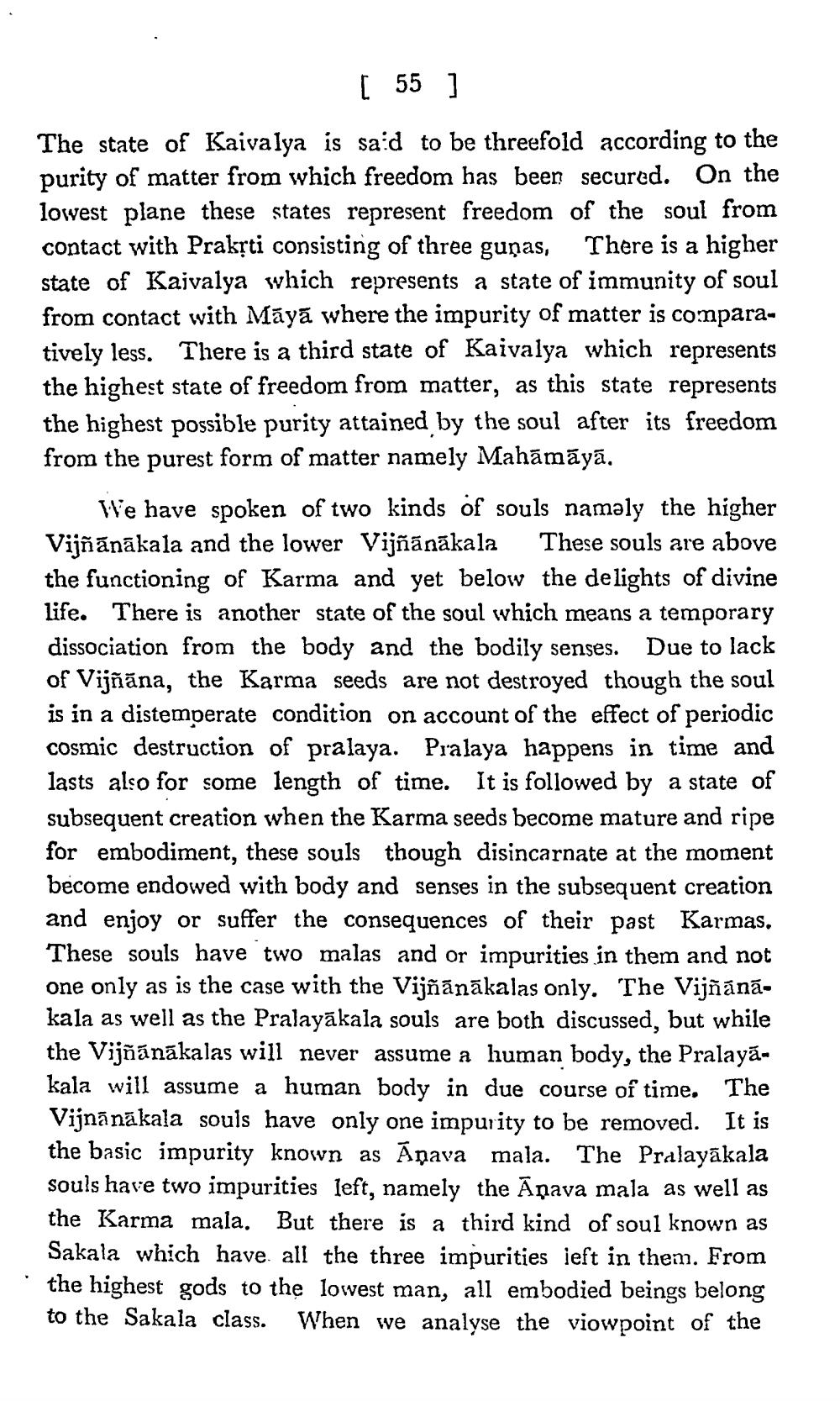________________
[ 55 ] The state of Kaivalya is said to be threefold according to the purity of matter from which freedom has been secured. On the lowest plane these states represent freedom of the soul from contact with Prakřti consisting of three guņas. There is a higher state of Kaivalya which represents a state of immunity of soul from contact with Máyā where the impurity of matter is comparatively less. There is a third state of Kaivalya which represents the highest state of freedom from matter, as this state represents the highest possible purity attained by the soul after its freedom from the purest form of matter namely Mahāmāyā.
We have spoken of two kinds of souls naməly the higher Vijñānākala and the lower Vijñānākala These souls are above the functioning of Karma and yet below the delights of divine life. There is another state of the soul which means a temporary dissociation from the body and the bodily senses. Due to lack of Vijñāna, the Karma seeds are not destroyed though the soul is in a distemperate condition on account of the effect of periodic cosmic destruction of pralaya. Pralaya happens in time and lasts also for some length of time. It is followed by a state of subsequent creation when the Karma seeds become mature and ripe for embodiment, these souls though disincarnate at the moment become endowed with body and senses in the subsequent creation and enjoy or suffer the consequences of their past Karmas. These souls have two malas and or impurities in them and not one only as is the case with the Vijñānākalas only. The Vijñānākala as well as the Pralayākala souls are both discussed, but while the Vijñā nākalas will never assume a human body, the Pralayakala will assume a human body in due course of time. The Vijnā nākala souls have only one impurity to be removed. It is the basic impurity known as Apava mala. The Pralayākala souls have two impurities left, namely the Ānava mala as well as the Karma mala. But there is a third kind of soul known as Sakala which have all the three impurities ieft in them. From the highest gods to the lowest man, all embodied beings belong to the Sakala class. When we analyse the viowpoint of the




